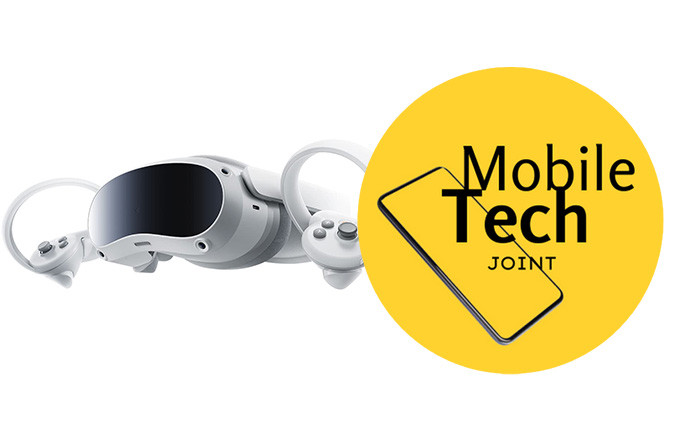The virtual reality market is constantly evolving, with new and improved headsets vying for consumer attention. Among the latest contenders is the Pico 4 All-in-One VR Headset, a product of ByteDance, which aims to rival the Meta Quest 2.

Key Takeaways:
- Ease of Setup: Simple unboxing and initial setup process.
- Comfortable Design: Well-distributed weight and accommodating for glasses wearers.
- High-Resolution Display: Offers 4320 x 2160 resolution (2160 x 2160 per eye) with a wide field of view.
- Adequate Audio: Built-in sound is decent, but external options can enhance the experience.
- Robust Tracking: Inside-out tracking with highly functional motion controllers.
- Varied Software: Reasonable game and application library, though not as extensive as competitors.
- PCVR Compatibility: Seamless connection to PC for enhanced VR experiences.
Pico 4 Review: The Ultimate Standalone VR Experience
In this comprehensive review, we will explore the Pico 4’s capabilities, covering everything from its unboxing and setup to its design, comfort, display, audio, tracking, software, and PCVR functionality. If you’re in the market for a new VR headset, this detailed analysis will help you determine if the Pico 4 is the right choice for you.
Unboxing and Setup
When you first receive the Pico 4, the packaging includes the headset, two motion controllers, and a charger. Setting up the Pico 4 is straightforward and user-friendly. Begin by placing the headset on your head and tightening it to fit comfortably. The device guides you through mapping out your play area and creating an account. The setup process is intuitive and quick, allowing you to dive into Pico’s virtual world almost immediately.
Additional accessories in the package include a nose flap for blocking light and a glasses spacer for users who wear glasses. The glasses spacer attaches magnetically, making it easy to install and remove. The nose flap, while a bit trickier to attach, ultimately fits securely after a few tries. The headset’s design also allows for easy adjustments, with a back that flips up to help you fit it snugly onto your face.
Comfort and Design
Comfort is a critical factor for any VR headset, and the Pico 4 excels in this area. The headset features foam padding at both the front and back, ensuring it doesn’t feel too tight during extended gaming sessions. The weight distribution is notably effective, thanks to the battery being built into the back of the headstrap, which helps prevent the front-heavy feeling common in many other headsets.
For users who wear glasses, the Pico 4 is particularly accommodating. The glasses spacer allows for a comfortable fit, although it might feel slightly tight for some. Importantly, the glasses do not touch the lenses, which is a significant improvement over several other VR headsets. The overall design makes the headset easy to put on and take off, with a secure fit that stays in place even during active gameplay.
Display and Vision
One of the standout features of the Pico 4 is its high-resolution display. The headset offers a resolution of 4320 x 2160 pixels (2160 x 2160 per eye), providing an incredibly sharp and detailed visual experience. The field of view is 105 degrees, which enhances the sense of immersion.
The Pico 4 uses pancake lenses, which are known for reducing glare compared to other lens types. The size of the “sweet spot,” or the area where the display is clear, is quite large, making it easy to find a comfortable viewing position. The colors are vibrant and the contrast is good, although the LCD display means you won’t get the true blacks that OLED screens provide. The refresh rate is capped at 90Hz, which is adequate for most users, although some high-end headsets offer up to 120Hz.
A notable feature is the adjustable interpupillary distance (IPD), which can be finely tuned by the millimeter. This physical adjustment ensures a personalized fit for different users. The color passthrough feature is another advantage, although objects appear larger than they are in reality.
Audio and Microphone
The integrated audio system of the Pico 4 is decent, providing clear sound that suffices for most applications. While it doesn’t match the quality of high-end headphones or the Valve Index, it’s acceptable for casual gaming. The absence of a phono port might be a downside for some, but a USB-C to phono adapter is a viable workaround, and Bluetooth provides a convenient, wireless option.
The microphone quality is adequate for casual online gaming, but serious streamers or competitive players might prefer an external solution for better clarity.
Tracking and Controllers
The Pico 4 features inside-out tracking via cameras on the headset, which accurately track the motion controllers. This setup works well within the camera’s view, and losing tracking has been a rare occurrence. The controllers themselves are comfortable and have a layout similar to the Meta Quest 2 controllers, making them intuitive for users switching from another headset. An added convenience is the screenshot button on the controllers, a handy feature for content creators.
Check This Out: Sony PlayStation VR 2 Review: A Generational Leap in VR Gaming
The controllers use AA batteries, with a cleverly designed compartment that makes battery replacement straightforward. This design, along with the loop sensor on the controllers, ensures they remain functional and easy to use.
Software and Store
While the Pico 4 has a reasonably wide selection of games and applications in its store, it falls short when compared to the Meta Quest 2’s extensive library. Notable absences, such as Beat Saber, highlight this gap. However, exclusive content like the upcoming Just Dance VR provides unique experiences for Pico 4 users.
The absence of a web store that can be accessed outside the headset or phone app is a minor inconvenience but not uncommon in VR ecosystems.
PCVR Capabilities
The Pico 4 can be connected to a PC for PCVR games using a USB 3.0 to USB-C cable or wirelessly via a WiFi router. While a dedicated dongle is planned, it hasn’t been released yet. The wireless connection works surprisingly well, with the free Streaming Assistant software providing a straightforward setup process. Despite occasional lag, the performance is generally smooth, making it suitable for most games, except those requiring precise timing, like rhythm games.
Watch this video for more insight.
Read: How to Answer Phone Calls on Google Pixel Watch
New VR users should be aware that some older games might have compatibility issues with inside-out tracking or non-standard controller mappings, but these challenges are not unique to the Pico 4 and affect many VR headsets.
Purchasing Information
For those interested in buying the Pico 4, it’s available on Amazon. Click our Amazon Affiliate link to purchase your own Pico 4 VR headset and start your virtual reality journey today.
Buy now on Amazon: SHOP NOW
Conclusion
In the end, the Pico 4 is an excellent virtual reality headset that offers impressive technology at a competitive price. Its comfortable design, sharp display, and effective weight distribution make it a strong contender in the VR market. Although it falls short in terms of game library compared to the Meta Quest 2, it still offers a wide range of applications and unique content.
As technology continues to evolve, the Pico 4 stands out as a solid choice for both new and experienced VR users.
For more insights on this article, check out these video tips across our social platforms:
